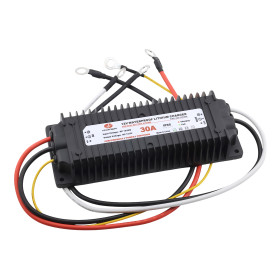Heating cable ⌀1.4mm, 5-48V DC, Teflon insulation
DC heating cable with a range of 5-48V
Application: suitable for the production of car seat and steering wheel heaters, refrigerators, air conditioners, USB heaters, special heating wires, electric blankets, towel racks, foot massagers, electric cookers, pet mats, electric warm clothes, window heaters, pipe anti-freeze protection, electric slimming belts, pet incubators, medical equipment. Freezing and defrosting equipment.
Resistance according to variant
Core: chrome-nickel, copper
Insulation: fluoropolymer, fire retardant, acid-resistant, oil-resistant, UV-resistant
Cable shape: round
Temperature range: up to 200°C
Price per 1m length
How to calculate the required power?
(supply voltage * supply voltage) / (heating cable length * heating cable resistance) = 14.4W
(12V * 12V) / (2m * 5 ohm) = 14.4W
- Voltage
- 5-48 V DC
- Average
- 1.2 - 1.4 mm
- Color
- Red
- Quantity core
- 1
Heating Cable Power Calculator
How does the calculator work?
Input Values
The user enters three main values:- Source Voltage (V): The voltage supplied to the heating cable.
- Cable Length (m): The total length of the heating cable.
- Cable Resistance (Ω/m): Resistance per unit length (usually in ohms per meter).
Calculation of Total Resistance
The calculator first computes the total resistance of the cable using the formula:This means that the longer the cable, the higher the total resistance.
Calculation of Current using Ohm's Law
According to Ohm's law, it holds that:Where is the voltage and is the total resistance. Therefore, as the cable length (and thus the resistance) increases, the current flowing through the cable decreases.
Calculation of Total Cable Power
The total power delivered to the cable is calculated using the formula:Since the current decreases as the resistance (and thus cable length) increases, the total power also decreases.
Calculation of Power per 1 m of Cable
The power per unit length (W/m) is obtained by dividing the total power by the cable length:This value is important because the actual heating of the cable depends on how much energy is released per meter. With a very long cable, even if the voltage is the same, the total power is divided over more meters, resulting in a lower power per meter.
Display of Results
The calculator then displays:- Cable Current (A): Calculated using Ohm's law.
- Cable Power (W): The total power delivered to the cable.
- Power per 1 m (W/m): The power distributed per meter of cable.
- Approximate Cable Temperature: Instead of a numerical value, text is displayed – if the temperature is 20 °C or lower, "Ambient Temperature" is shown, and if the temperature is 90 °C or higher, "Too high!" is displayed. The calculated value is based on an ambient temperature of 20 °C.
Why does the cable's power decrease with length?
Increase in Total Resistance:
The cable's resistance is specified in ohms per meter. When you extend the cable, the total resistance increases linearly with its length. For example, if the resistance is 0.1 Ω/m and the cable is 10 meters long, the total resistance will be 1 Ω; if the cable is 100 meters, the resistance will be 10 Ω.Decrease in Current:
Since the current is given by the formula = , a higher resistance results in a lower current through the cable. Less current means that less energy is delivered to the cable.Total Power and Power per 1 m:
The total power of the cable is given by the formula . As the current decreases, the total power also decreases. Furthermore, this power is distributed along the entire length of the cable. Therefore, the longer the cable, the lower the power per meter, which directly affects the heating. With a very long cable, even if the total power is significant, the power per meter may become extremely low, resulting in inefficient heating of the cable.
EU Importer: AMPUL SYSTEM s.r.o., Čsl. armády 641/40, 78701 Šumperk, Czech Republic,













